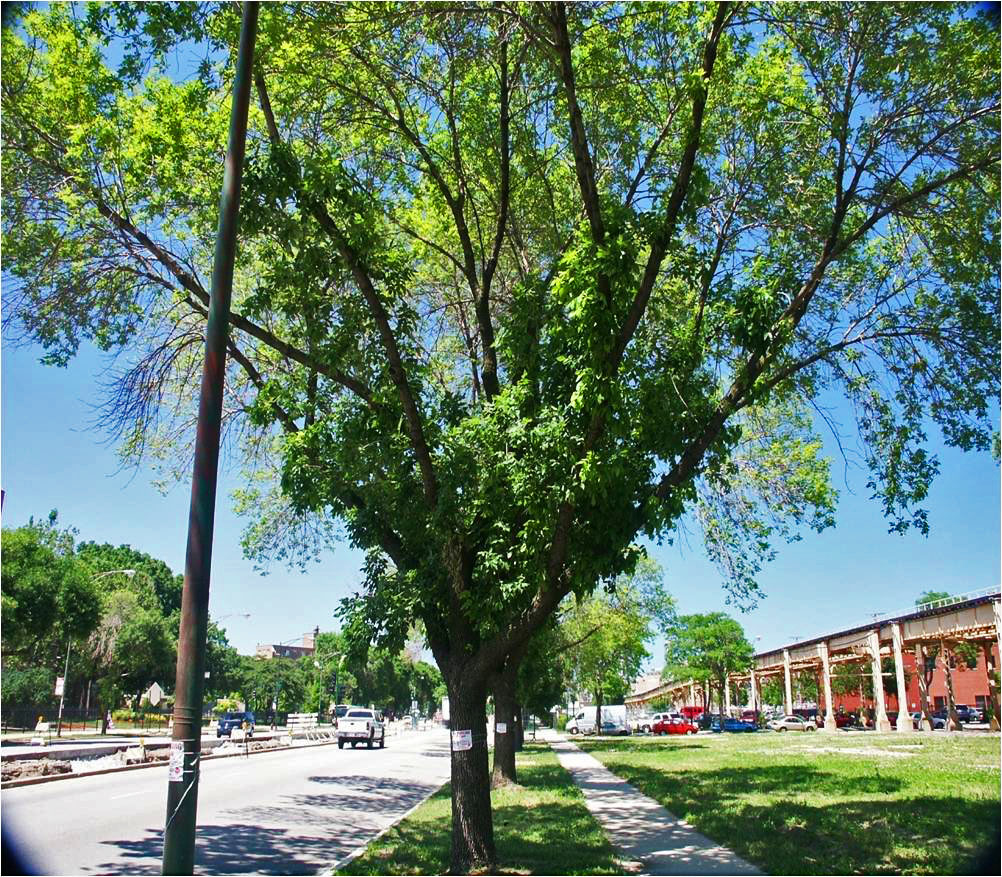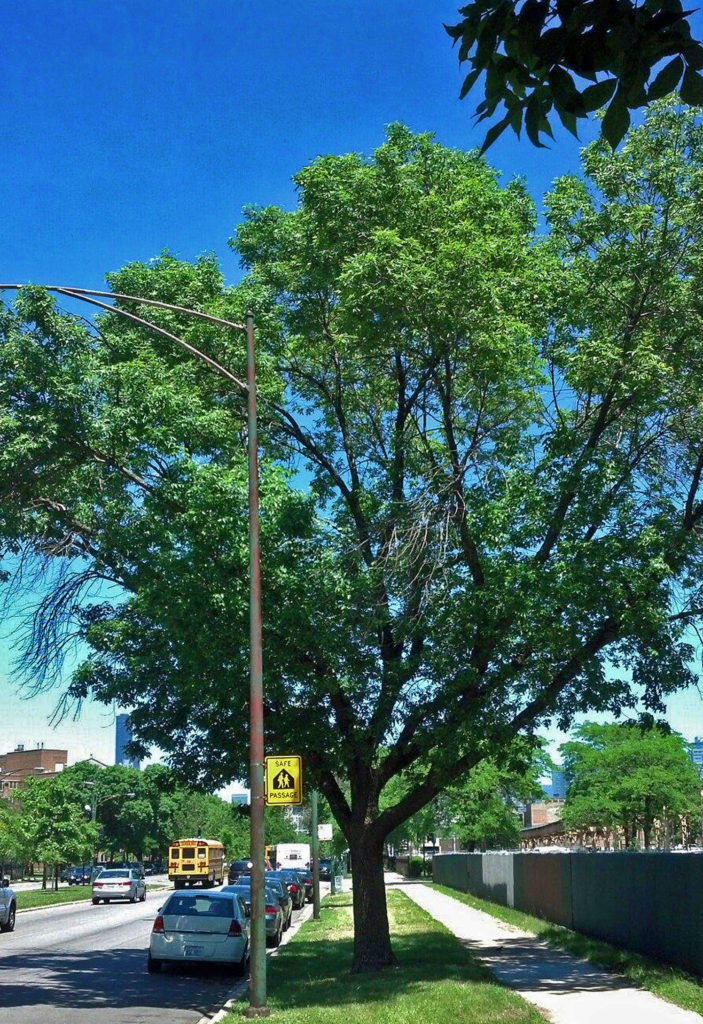In 2007, we were asked to support the City of Chicago, Forestry Dept., to develop plans against a new invasive beetle, the Emerald Ash Borer, which has now killed tens of millions of trees across the US and Canada. It was anticipated to arrive in Chicago at any time, and a strategy was needed to address the roughly 95,000 at risk public ash trees, whose death would cause an enormous financial burden while significantly impacting the urban forest canopy. It was estimated that removal and replacement of the city parkway ash would reach over $100M, and that it would happen within five years of the pest’s arrival, if left untreated.
Working with the Chicago Forestry Department, we introduced our specialized tree injection equipment and a new chemistry, TREE-äge, to offer a financially responsible and effective, environmentally-sound solution against the devastating loss of this urban canopy. Chicago chose the healthiest trees to protect, and began its program, first using city arborists, then through a work program to increase job opportunities for young people. Arborjet trained all applicators as a prerequisite for treatment. Early on, they were treating up to 18,000 trees per season. Pretty spectacular! They estimated at the time, they would save 65,000 trees.

We’d shown them how a tree could be protected for several years from one treatment, and that the cost to remove and replace was so much more costly, that treatment could occur for decades, if needed, before the cost to treat, and the cost to remove/replace were equal.
With the economic downturn in 2008, it became difficult to fund many programs, including this one, and Chicago had many unmet citizen-needs to address as well. As a result, yearly tree treatment numbers declined, while it became harder to find qualified potential applicators. Herd immunity was working too. As an example, one previously attacked tree that we treated in 2008, went six years between treatments, due to an error, and much improved when next treated in 2014! It is still alive.

In 2019 the city decided to halt further treatments, due to many financial challenges, but we knew that there were still a great many ash in prominent places along most streets, that could still be saved. We developed the Save Your Ash program to provide a means to inform and act with residents, citizen groups, and businesses along these streets before the impending loss of tens of thousands of trees.
Last year, with the help of the North River Commission, we embarked on a program to convey the message that “street trees were in peril in their neighborhoods, and that residents could help. Several citizen community groups were engaged, and we identified multiple treatment companies who would partner with us to assure that residents could arrange to have the trees along the streets of their neighborhoods protected at a very reasonable price.
Due to Covid-19 restrictions we started late, but by August 2020, the program had begun to treat hundreds of trees in short order. It will soon kick into action for 2021, offering low-cost treatments, to save neighborhood ash and to keep the city more livable, through canopy retention. Recently an article appeared in the Chicago Tribune, addressing the topics of tree loss, and the invasion in Chicago, of a non-native tree species called Buckthorn, which now represents 36% of the tree population in Chicago.
In the coming weeks we will reach out to residents with the support of the NRC and local citizen groups, gather local funds and support the treatment of many residential neighborhood trees. We are proud to have initiated and to participate in this program, to assure that city streets retain canopy, during, and while replacement trees grow, and take over the job of sustaining a canopy. Treatments occur every few years, so the cost to protect these valuable neighborhood trees is eclipsed by the benefits these trees provide to residents.
There is much work to be done in 2021, as we partner to protect the many remaining Chicago street trees, during a critical time for their survival. If not treated soon, these ash trees will be beyond our ability to save them.
Rob Gorden
Director of Urban Forestry
Arborjet
